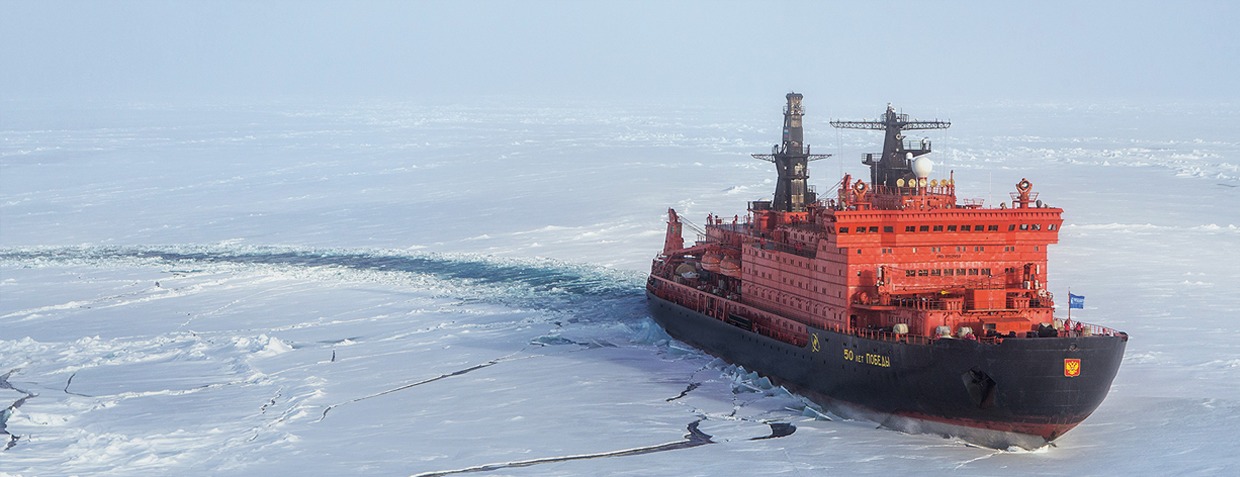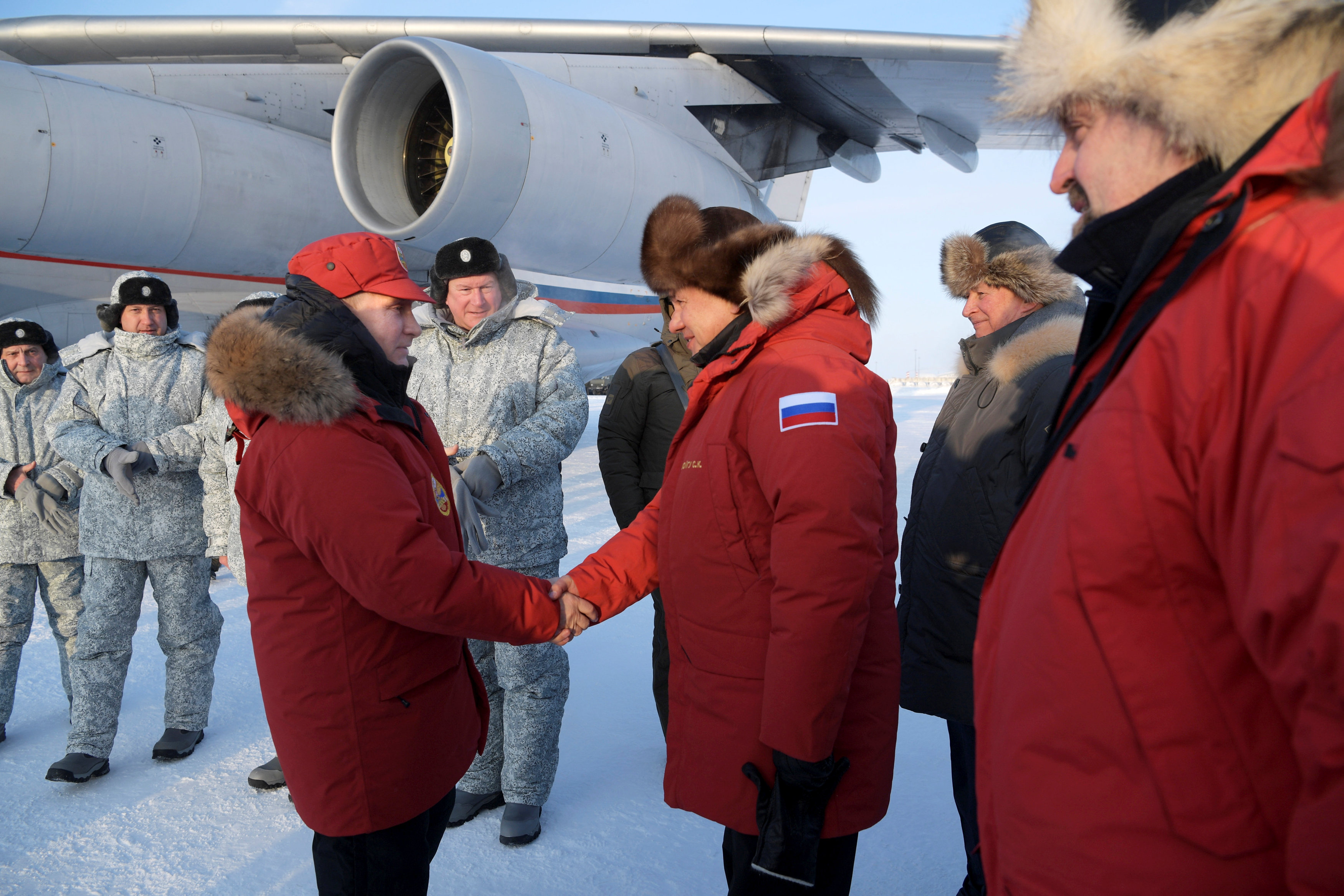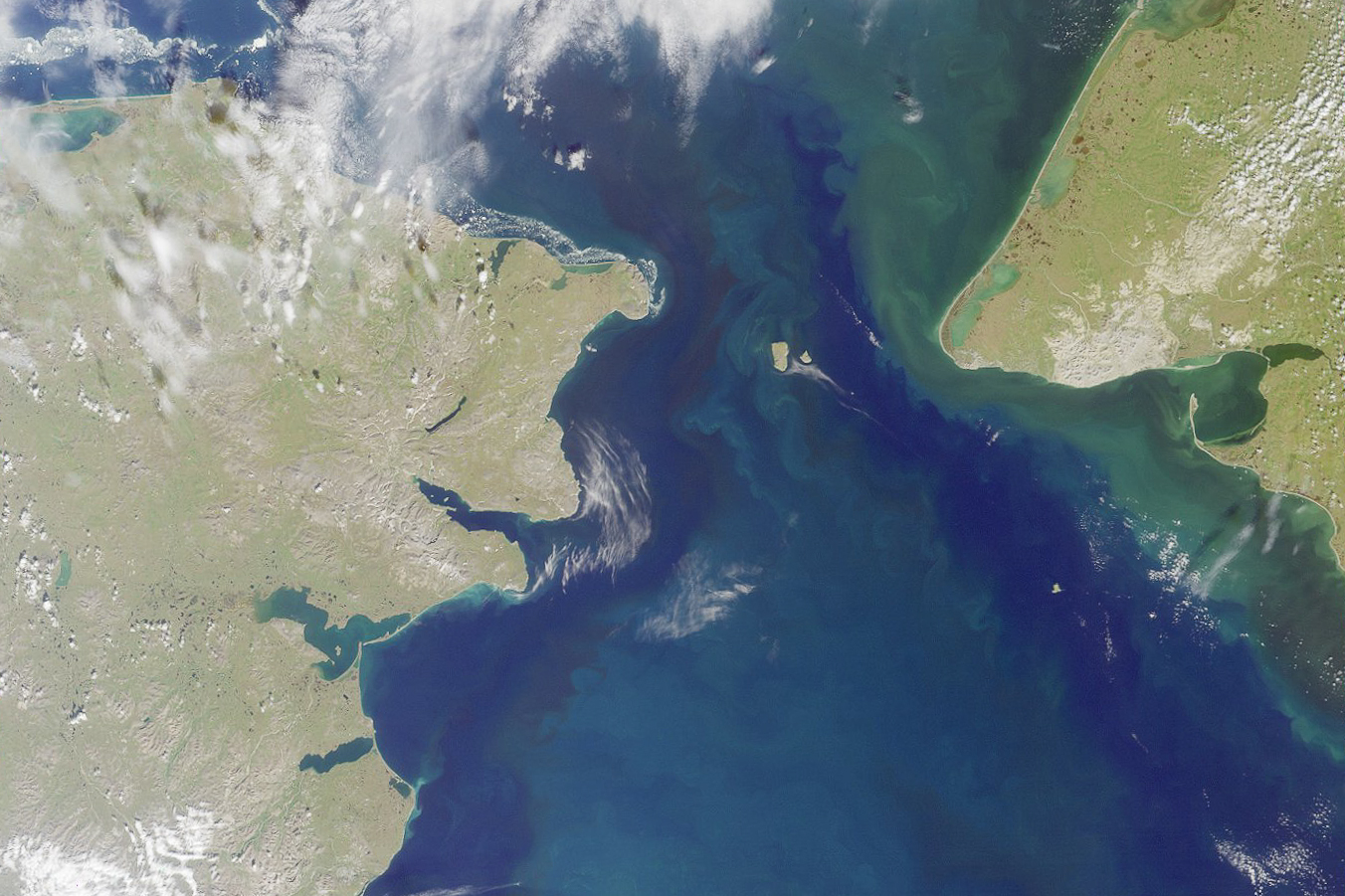Russia stands ready to work together in the Arctic
"We call not for rivalry, but for peace and mutually beneficial cooperation in the region."

In 2021 the Russian Federation will assume the presidency in the Arctic Council — a forum of Arctic countries focusing on the development of intergovernmental cooperation in the region.
Russia persistently considers the Arctic as a zone for collective interaction and good neighborliness. We act on the basis of strategic documents adopted by our leadership — the Fundamentals of State Policy of the Russian Federation in the Arctic until 2020 and Beyond as well as the Strategy for the Development of the Arctic Zone of the Russian Federation.
Climate conditions, flora and fauna of the Arctic region are unique. It is rich in natural resources. More than 20 percent of the world’s oil and gas reserves are located in the Arctic Ocean’s bed. Developing these resources and ensuring their continuous supply are the key to steady and sustainable growth of the global economy.
Russia has the most wide-ranging economic agenda in the region. At the same time, maintaining balance between economic development and preservation of the fragile biosystem remains our priority. As Russian President Vladimir Putin repeatedly stated, our country’s primary tasks in developing the Arctic region include promotion of nature friendly technologies and introduction of the most modern environmental standards in industry, transport and energy.

According to preliminary estimates, about 13 billion tons of oil and 95 trillion cubic meters of natural gas are concentrated in the Russian segment of the Arctic alone. We’ve already started to develop them. Today more than 10 percent of national GDP and more than 20 percent of the Russian exports are produced in the Arctic zone of the Russian Federation. The importance of the Far North in ensuring robust development of our country will keep on growing.
While sharing the commitment of the Arctic Council to the principles of peace, stability and cooperation, we actively seek to engage broader circles of the global community in discussing the future of the Arctic, its stable and sustainable growth. Advanced scientific experience and technology are important in this matter. In this regard I would like to single out the platforms that, upon Russia’s initiative, provide regular multilateral dialogue on a wide range of issues of development of the North.
In April 2019, the International Forum “Arctic: Territory of Dialogue” was held once again and attended by the presidents of Russia and Finland.
In late September, the Security Council of the Russian Federation organized the VIII International Meeting of the Representatives of the Arctic Council Member States, Observer countries and international scientific community.
This week, December 5-7, the International Conference “Arctic: Present and Future” will be held in St. Petersburg for the ninth time. Its agenda includes economic, environmental, social and legal aspects of activities in the region. Experts, representatives of scientific and business communities, public authorities and international organizations are expected to participate in the forum.
We believe that these constructive cooperation formats, can help ensure peaceful and sustainable development of the Far North.
Today the Arctic is undergoing rapid changes. It is clear that there are a number of factors — “catalysts” of sorts — which determine the need to deepen intergovernmental cooperation. They include, above all, climate change which, on the one hand, remains a serious common challenge, and on the other hand, provides new opportunities. For instance, in increasing the use of the Northern Sea Route for maritime navigation.

Maritime transit between Europe and Asia through the NSR requires less fuel, and nuclear-powered icebreakers do not emit harmful gases. Therefore, greenhouse gas emissions will be minimal. The NSR has every precondition to become a global and environmentally friendly artery for delivery of goods. It is important to ensure safety and continuity of transportation all year round. The Russian leadership has set ambitious goals to increase the current NSR cargo traffic by four times up to 80 million tons by 2024. Moreover, according to the estimates of the Russian Ministry for the Development of the Far East and Arctic, the number could reach 160 million tons in ten years. A project to establish a state operator for container transport through the NSR is being drafted.
Considering the expected growth of the NSR cargo flow, including to Asia, in May 2018, the International Maritime Organization adopted the joint Russia-U.S. proposals on routeing measures and mandatory ship reporting systems in the Bering Strait and approaches to it. They have been in effect since Dec. 1, 2018. Three recommended safe pathways as well as precautionary areas for navigation have been identified there. This is the first bilateral initiative in northern waters approved by the IMO. It shows the potential for mutually beneficial cooperation between Russia and the U.S.
In order to develop the region’s infrastructure, the Northern Latitudinal Railway stretching more than 700 kilometers (nearly 440 miles) is being constructed. It will grant access for the Ural industrial centers to the deposits of natural resources located in the Northern regions of the Yamal Peninsula, to the NSR and will expand opportunities for the development of remote Arctic territories.
The Russian government provides all necessary assistance to the region in creating a favorable investment climate for economic activity. Preferential income tax rates, reduced mineral extraction taxation and long-term targeted financing for key national projects are applied.
Russia is open for cooperation and stands ready to implement new initiatives in the Arctic with the participation of foreign partners. We envisage not only the development of oil and gas and mineral deposits, but also joint plans for the expansion of the shipbuilding industry, transport and tourism infrastructure, introduction of new industrial technologies.
A lot of attention is paid to creating favorable life conditions for the residents of the circumpolar regions and supporting the Indigenous peoples of the North.
Work is currently underway to eliminate the damage caused by extensive economic activities of the past decades. More than 80,000 tons of waste have already been removed and disposed of during “spring-cleaning” efforts in Arctic territories. Our plans for the coming years include elimination of large objects of accumulated environmental damage and cleaning the Kola Bay water area.
Russia endorses the creation of a system of network programs of Arctic research in order to support multilateral projects of scientific and technological cooperation in the Far North. They cover the study of marine biodiversity, the condition of water resources, including possible use of algae as biofuels. Serious attention is paid to the problem of acidification of the waters of the Arctic Ocean.
The work of the unique Russian ice resistant self-propelled platform “North Pole” is intended to significantly contribute to the development of the Arctic research.
The Arctic remains a territory of low military and political tensions with zero potential for conflict. There is an objective need for the Russian military presence in the region to ensure safe navigation in the Arctic Ocean. Still, it is much lower compared to the Soviet times. Moreover, there are no force-related challenges in the region, especially the ones requiring NATO to build up its military presence there.

Our country delimited the marine space with its neighbors — Norway and the U.S. — in accordance with intergovernmental agreements, and the demarcation lines are not being disputed by any of the countries at the state level. As for the outer limits of the continental shelf beyond 200 nautical miles in the Arctic Ocean, the coastal Arctic States in the Ilulissat Declaration of 2008 committed to an orderly settlement of possible mutual claims on the basis of international law.
We call not for rivalry, but for peace and mutually beneficial cooperation in the region.
In order to build trust and common understanding and prevent any kind of escalation, we stand for restoring the full-scale military-political dialogue of the Arctic States, resuming the pre-2014 practice of holding annual meetings of the Chiefs of the General Staff of the armed forces of the Member States of the Arctic Council. This is an effective mechanism for maintaining regional stability. The interrupted dialogue on military and political issues could be renewed with consultations of military experts of the Arctic States.
We support the development of a legal framework to reduce the risk of accidents and marine pollution. We believe it is necessary to more effectively concentrate the emergency and rescue resources of the coastal states in the region.
Considering the rapid development of maritime activities in the Arctic — including cruise tourism — it is important to further strengthen the capacity of rapid response to possible emergencies. We support the expansion of cooperation through the Arctic Coast Guard Forum.
By the way, a very close dialogue and mechanisms of practical cooperation between the coast guards of Russia and the U.S. have been established over recent years. On the American side, the leading role is being played by the U.S. Coast Guard’s 17th District Command in Alaska. The distance between the Big Diomede and the Little Diomede islands in the Bering Strait, belonging respectively to Russia and the U.S., is less than 4 kilometers (about 2.5 miles). Joint work with the Russian FSB Border Service in the Eastern Arctic region in Kamchatka is carried out through exchanging information, patrolling and practicing rescue operations. Coordination has been established to counter poaching and prevent oil spills.
We are confident that preserving peace and stability in the Far North is possible only through mutual respect and constructive dialogue between neighbors, including a dialogue on security policy issues, showing military restraint and refusal to take provocative actions. We believe that any arising issues should be addressed through political means, at the negotiating table within the Arctic Council and other universally recognized international platforms.
Anatoly Antonov is the Russian Federation’s Ambassador to the United States.
The views expressed here are the writers’ and are not necessarily endorsed by ArcticToday, which welcomes a broad range of viewpoints. To submit a piece for consideration, email commentary (at) arctictoday.com.